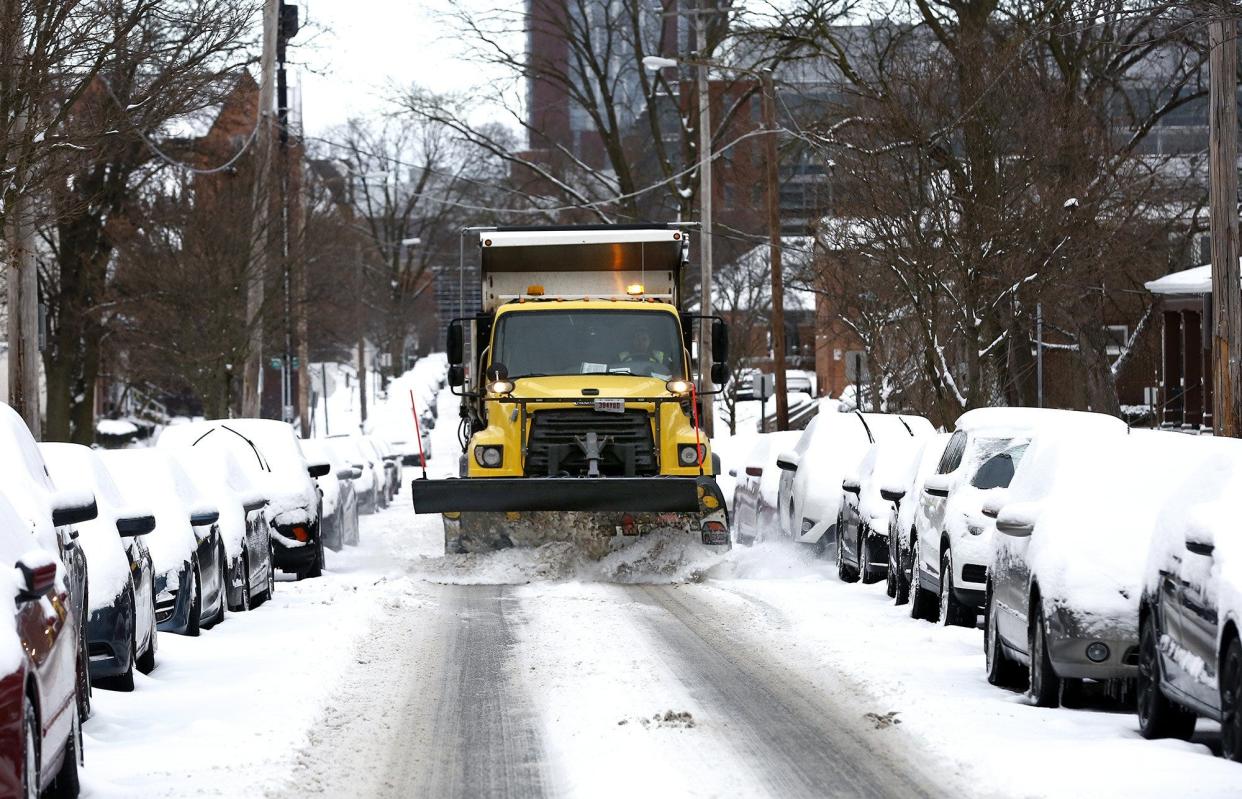What does it mean when Franklin County, Columbus are under snow emergencies?

Familiar signs dot busy streets along Columbus and other cities: "No stopping during snow emergency." Icy sidewalks, snow-covered roads and cold winds may feel like emergencies all on their own.
As of Monday morning, Franklin County was under a Level 2 snow emergency.
There actually are three levels of snow emergencies, according to the Ohio Committee for Severe Weather website. Here's what they are and what they mean:
Level 1 snow emergency
This means that roads are icy and there is some blowing or drifting snow into roadways. Those out driving are urged to "drive very cautiously.
Level 2 snow emergency
In addition to blowing and drifting wind, roads are very icy and only necessary travel is recommended during Level 2 snow emergencies. Drivers are urged to ask their employers if they should report to work.
Level 3 snow emergency
Roads will close to non-emergency personnel during Level 3 snow emergencies, except for personal emergencies or "absolutely necessary" travel. Those out driving may be subject to arrest, the Ohio Committee for Severe Weather website states.
Who declares a snow emergency?
County sheriff departments determine the snow emergency level, as well as how long the emergency is in effect.
What happens with COTA buses in a snow emergency?
According to COTA's website, all fares are free when the county is under a Level 2 or 3 emergency. The transit authority says doing so helps keep cars off the roads, both for crews and for roadway safety.
Do parking regulations change during a snow emergency?
You are only required to move your car from off-street parking in Columbus if the mayor declares a snow emergency, separate from the county.
Still, it is often recommended to move your car off the street even if not required so streets can be cleared more easily. On Sunday, ahead of the incoming storm, Charles Newman, spokesman for the City of Columbus' Department of Public Service, suggested residents move their vehicles before Monday morning, when the city will put down de-icer.
The regulation, outlined in the city's snow plan, only applies to certain streets to help with street cleaning. Here are the streets listed:
Cleveland Avenue from Jack Gibbs Blvd to Oakland Park Ave.
North Fourth St. from Warren St. to Hudson St.
North High St. from Russell St. to Oakland Park Ave.
North Broadway from SR – 315 to I – 71
Oakland Park Ave. from Maize Rd. to Cleveland Ave.
Summit St. from Hudson St. to Warren St.
Weber Rd. from Indianola Ave. to Westerville Rd.
East Broad St. from I – 71 to Nelson Rd.
Fifth Ave. from Glenn Ave. to Osborn Ave.
Indianola Ave. from Hudson St. to Oakland Park Ave.
East Main St. from I – 71 to Alum Creek Dr.
West Broad St. from Wilson Rd. to SR – 315
Sullivant Ave. from Demorest Rd. to SR – 315
South High St. from Livingston Ave. to SR – 104
East Whittier St. from South High St. to Lockbourne Rd.
Livingston Ave. from South High St. to Alum Creek Dr.
sszilagy@gannett.com
@sarahszilagy
This article originally appeared on The Columbus Dispatch: Columbus snow emergency: What the different levels mean

